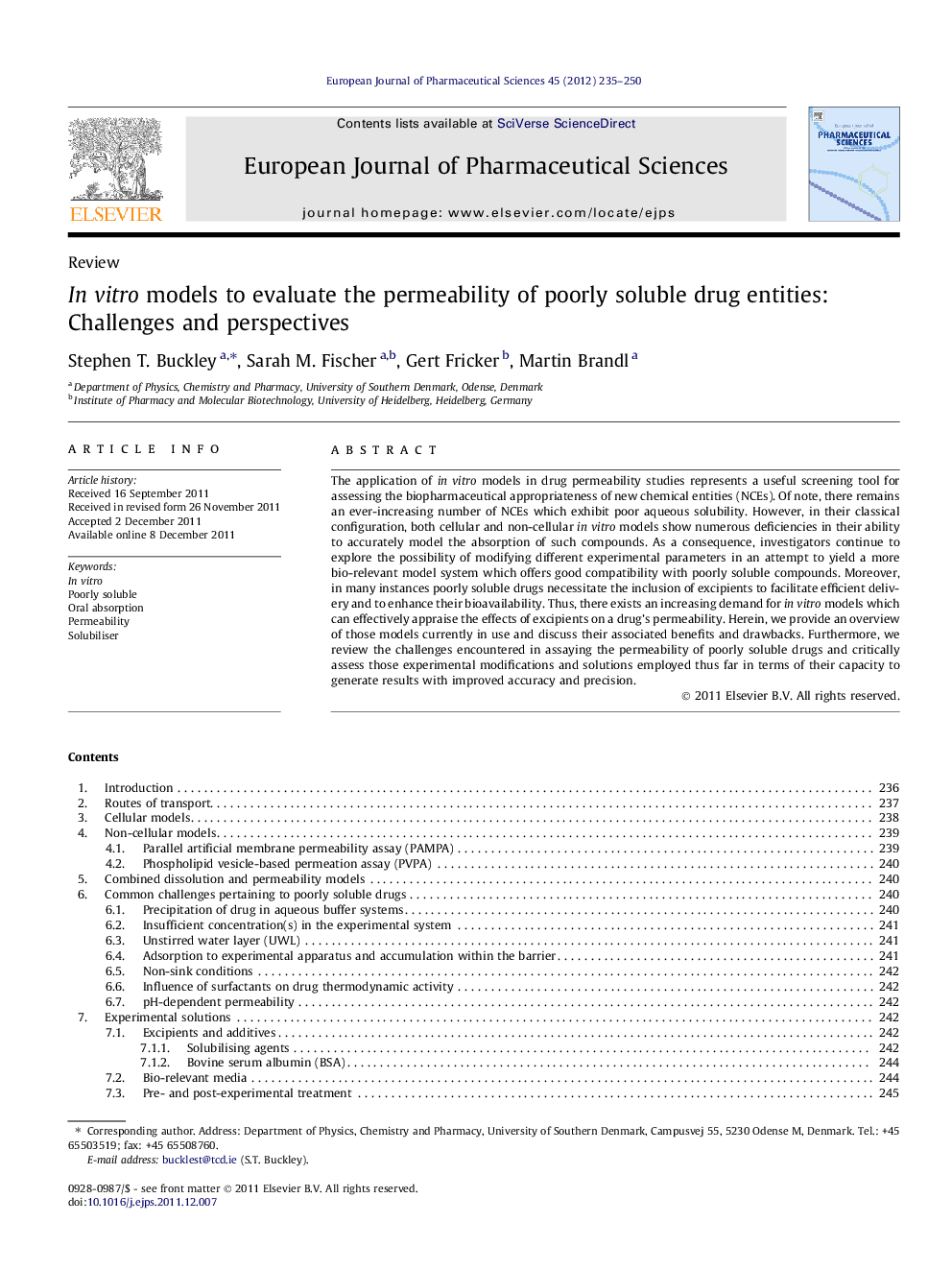| Article ID | Journal | Published Year | Pages | File Type |
|---|---|---|---|---|
| 2480764 | European Journal of Pharmaceutical Sciences | 2012 | 16 Pages |
The application of in vitro models in drug permeability studies represents a useful screening tool for assessing the biopharmaceutical appropriateness of new chemical entities (NCEs). Of note, there remains an ever-increasing number of NCEs which exhibit poor aqueous solubility. However, in their classical configuration, both cellular and non-cellular in vitro models show numerous deficiencies in their ability to accurately model the absorption of such compounds. As a consequence, investigators continue to explore the possibility of modifying different experimental parameters in an attempt to yield a more bio-relevant model system which offers good compatibility with poorly soluble compounds. Moreover, in many instances poorly soluble drugs necessitate the inclusion of excipients to facilitate efficient delivery and to enhance their bioavailability. Thus, there exists an increasing demand for in vitro models which can effectively appraise the effects of excipients on a drug’s permeability. Herein, we provide an overview of those models currently in use and discuss their associated benefits and drawbacks. Furthermore, we review the challenges encountered in assaying the permeability of poorly soluble drugs and critically assess those experimental modifications and solutions employed thus far in terms of their capacity to generate results with improved accuracy and precision.
Graphical abstractFigure optionsDownload full-size imageDownload as PowerPoint slide
